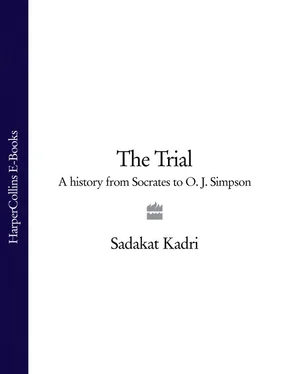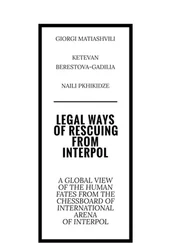The machinery of repression available to the Church in the early 1200s had been extremely lacklustre. Clerics had been too complacent to hunt down its enemies. Trial by ordeal was too irrational to locate them. And even if a bishop got round to convicting a heretic, the only punishment he could impose was excommunication and denial of Catholic burial, a fate unlikely to disturb the repose of any self-respecting apostate. Innocent III had cleared the way for reform by abolishing ordeals and establishing orders of monks who would report directly to the Holy See, but when he died in 1216 the most fundamental problem – the papacy’s lack of muscle – remained unresolved.
That was about to change. In 1232, Pope Gregory IX persuaded Emperor Frederick II of Germany that as a good Catholic, he should instruct his judges to burn heretics as and when officers of the Church identified them. He simultaneously advised monks at the recently established Dominican friary at Regensburg to get identifying. Gregory’s relationship with Frederick was always precarious, and it collapsed in 1237, when he denounced his erstwhile ally as ‘a Beast…with the feet of a bear, the mouth of a raging lion, and the [limbs] of a leopard’, but by then the dalliance had already borne fruit. And its offspring was the papal Inquisition.
It would be several decades before the system reached maturity, but the template was established within months of Frederick’s agreement with Gregory. Conrad of Marburg, a gaunt and zealous priest who rode about on an ass, had been snooping around the Rhineland on Rome’s behalf for several years, and he now began to send back some alarming reports. Although the only sectarians present in significant numbers were the Waldensians, whose heresy was essentially to trudge around without shoes and preach that clerics would do well to do the same, Conrad claimed to have encountered practices far more troubling. The region was infested with people who celebrated Lucifer as the true creator, he warned. They believed, among other outlandish things, that the Eucharist should not be swallowed but spat into a latrine. Converts were initiated at meetings attended by the Devil himself, who generally assumed the form of a toad, a pale-skinned man, a goose, or an immense black cat with a stiff tail. After kissing his anus, the heretics would extinguish the candles, fumble for each other’s genitals, and embark upon an orgy that ended only with another hellish manifestation, this time of a character with loins as furry as a feline and chest more radiant than the sun.
The claim replicated rumours that had been circulating about religious deviants since Roman times, and most historians agree that the tales of Luciferan worship and sexual free-for-alls bore about as much relation to reality as the man with the furry loins. But whether it was malice or mistake that inspired Conrad to his discoveries, Gregory was appalled – and, for the first time, in a position to take action. He urged his emissary to gather some evidence, and Conrad threw himself into the task with grim enthusiasm.
Travelling from town to town in the company of two sinister sidekicks – a certain Conrad Torso and a character with one arm and one eye known only as Johannes – he was soon finding heretics wherever he looked. As the baleful trio progressed, shaving the heads of suspects who named their accomplices and incinerating those who did not, accusations ricocheted ever higher up the social scale. In 1233, Germany’s bishops and nobles finally realized that if they did not stand together, they would burn separately.
The showdown occurred at Mainz in July, when Conrad of Marburg summonsed Count Henry of Sayn to answer reports that he had been seen riding a giant crab. Sideways motion was, symbolically speaking, a sure sign of heresy and the charge was a grave one; but the city’s clerics and aristocrats stiffened their spines and collectively testified to Henry’s piety. Conrad’s witnesses, sniffing the wind, admitted that they might well have been mistaken about the crab. The inquisitor dropped his case, vowing revenge, but the game was up. As he trotted furiously back to Marburg he was murdered on his ass, and his henchmen only outlasted him by a few months. One-armed Johannes was last seen in Freiburg, oscillating from the end of a lynch mob’s noose, while Conrad Torso, evidently more eager than authoritative, was sliced to ribbons in Strasbourg by the first person he summonsed.
Pope Gregory, infuriated with his clergy, raged that Conrad’s assassination was a ‘thunderclap that had shaken the walls of the Christian sanctuary’. The bishops had, once again, obstructed a papal attempt to get tough on heresy. But their power to do so was about to be drastically curtailed. Conrad’s adventures confirmed that an alliance between agents loyal to the pope and secular judges could potentially work wonders, and although Gregory’s relationship with Germany’s emperor remained fraught, France was nurturing a monarch with whom the papacy would be able to do far better business. Louis IX had been under papal protection since the death of his father in 1227. By the time he reached his majority in 1235, Conrad of Marburg would have gained a redoubtable successor.
St Louis, as he would one day become, was a gangly, smooth-featured and prematurely balding young man, but the callow physique belied a prodigious faith. He delighted in dining with beggars. Few were the lepers whose feet he did not stoop to wash. And notwithstanding the occasional impulse to abandon his throne for a monastic cell, he wielded the sword of righteousness as surely as he loved his fellow man. It was better to disembowel Jews than dispute with them, he proposed, while blasphemers in his realm were condemned to be branded on the lips or garlanded in pig entrails. It is perhaps little surprise that when Gregory suggested, in the early 1230s, that France could do with some Dominican inquisitors, Louis accepted with enthusiasm.
Louis’ eagerness was motivated primarily by piety, but politics also played its part. Forces loyal to the Church had recently won a final military victory in the quarter-century crusade against the Cathars, and the destruction of the Languedoc offered unparalleled opportunities. The heretics, knights, and troubadours of the region had always been a little too lively to be loyal, but the smoking battlefields that remained looked ready for incorporation into France proper. In a deadly pas de deux with Gregory IX, Louis therefore despatched his own judges to join Gregory’s monks in asserting royal control over southern France.
The consequences would be far-reaching. Louis would always be at least as concerned to crack down on official abuses as to impose his will. Canonical law could be no less benign, with scholars finding the basis for a whole catalogue of defendants’ rights in Justinian’s Digest and the Old Testament. But as the first papal inquisitors arrived in southern France in 1234, lighting execution pyres that were soon roaring as far north as Flanders, the structure of customary and canonical law began to buckle. The squads of young monks, faced with resistance and riots, were soon translating theoretical safeguards into practices of military efficiency. The idea that no one should be forced to incriminate himself or herself, in support of which canonists had pointed to the silence that Jesus permitted Judas, became increasingly illusory. The notion that some matters were best judged by God, exemplified by Joseph’s decision not to shame Mary by way of public divorce, similarly eroded. As humility and mercy evaporated, suspects were instead arrested on the strength of anonymous denunciations, denied legal assistance, and made to state on oath what they thought might have been alleged against them. Stings and bugging operations were used, with agents provocateurs encouraging malcontents to share their thoughts while hidden scribes jotted down every word. The powers claimed were as hygienic as they were punitive. Heresy was conventionally regarded as a disease, and just as the Book of Leviticus had once prescribed the destruction of buildings that harboured pestilence, the houses in which heretics had met were soon being demolished as a matter of course.
Читать дальше




![Theresa Cheung - The Dream Dictionary from A to Z [Revised edition] - The Ultimate A–Z to Interpret the Secrets of Your Dreams](/books/692092/theresa-cheung-the-dream-dictionary-from-a-to-z-r-thumb.webp)







